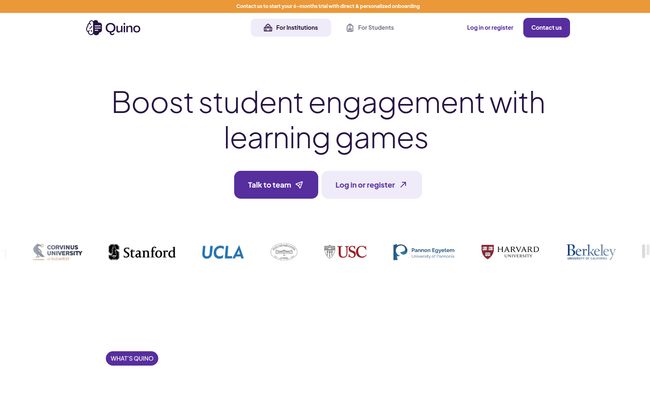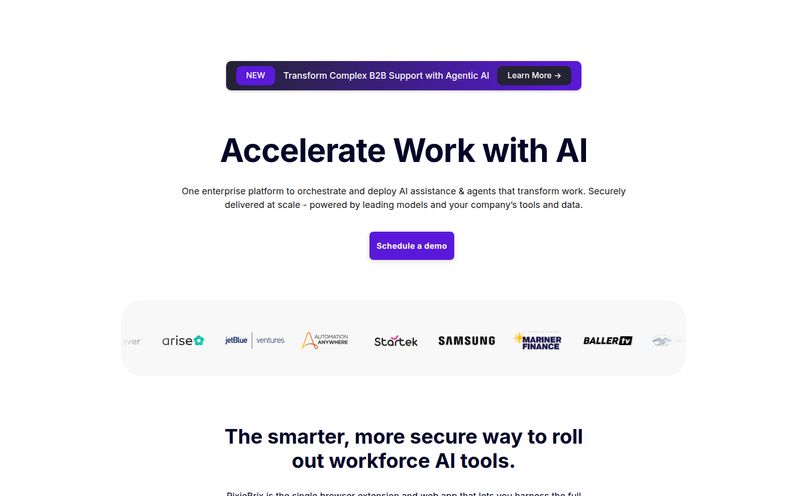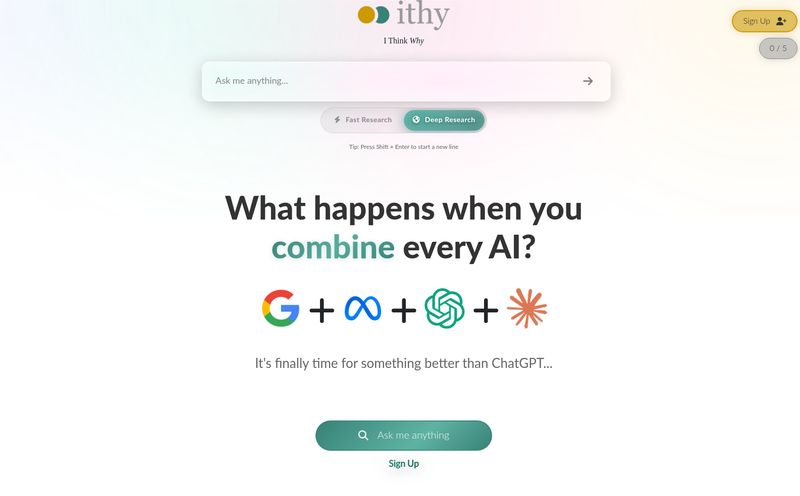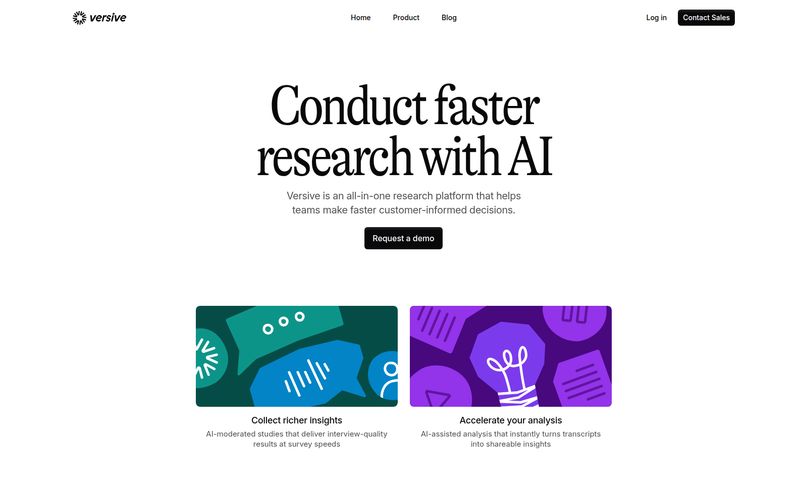I’ve been in the digital marketing and traffic generation world for years, and I’ve seen AI tools come and go. Some are revolutionary, others are… well, just shiny objects that fade fast. So when I see a new platform making bold claims, my inner skeptic raises an eyebrow. The latest on my radar? A platform called Quino.
It promises to use AI to boost student engagement and save professors from the soul-crushing grind of administrative work. A big promise. Especially now, when every educator I know is walking a tightrope between embracing technology and worrying about students using ChatGPT to write their papers. It’s a real mess out there. So, does Quino actually deliver, or is it another flash in the pan? I had to find out.
What Exactly is Quino Anyway?
First off, let's get one thing straight: Quino isn't just another AI summarizer or a fancy flashcard app. I’ve seen a hundred of those. The core idea here is genuinely different. You, the professor or educator, upload your course materials—lecture notes, PDFs, articles, you name it. Then, Quino’s AI gets to work and transforms that static content into interactive, fun learning games.
Think about that for a second. Instead of just telling students to “read chapter 5,” you can assign a series of games that test their knowledge of chapter 5. It’s a shift from passive consumption to active engagement. And for anyone who’s ever stared out at a sea of blank faces in a lecture hall, that’s a pretty compelling idea.
The Three Big Headaches Quino Tries to Cure
From what I can gather from their site and my own experience talking to friends in academia, Quino is aiming its cannons at three massive problems in higher education.
The Professor's Never-Ending To-Do List
Being a professor isn't just about inspiring young minds. It’s also about drowning in paperwork. Creating tests, grading, preparing lessons, answering the same five questions over email… it’s exhausting. Quino’s main pitch here is automation. By auto-generating quizzes, learning exercises, and even summaries from your documents, it acts like a tireless teaching assistant. It takes the repetitive, time-sucking tasks off your plate so you can focus on, you know, actually teaching.
The Student Cramming Epidemic
We’ve all been there. The night before a final exam, fueled by caffeine and regret, trying to absorb an entire semester’s worth of information. It’s not effective learning; it’s just short-term memory Olympics. Quino tackles this by gamifying the learning process. The idea is that short, regular, game-based interactions with the material will encourage students to study consistently, not just in one panic-fueled binge. It’s a smart way to promote better study habits and, hopefully, better retention and grades.
The AI Elephant in the Room: Cheating
Let's be real. The biggest fear surrounding AI in education is its potential for misuse. Plagiarism is easier than ever. But Quino’s approach is what I find most interesting. Instead of banning AI, it tries to beat the cheaters at their own game. It uses AI constructively. By creating learning tools from the professor's own source material, it keeps the learning process inside a controlled ecosystem. It's an attempt to make AI a tool for genuine learning, not a shortcut to a passing grade. I have to say, that’s a pretty clever angle.
A Look Under the Hood: Quino's Features
So how does it do all this? The feature list is pretty focused. You get automatic summaries and bullet-point notes, which are handy. There’s a semantic search tool, so students can ask questions about the documents and get actual answers. And of course, the big ones:
- Quiz Question Generation: Turns your source material into test questions. A huge time-saver.
- Learning Game Generation: This is the secret sauce. It’s the feature that turns passive reading into an active, engaging experience for students.
- Student Insights: The platform provides you with analytics on how your students are doing, where they're struggling, and who is engaging with the material. Gold. Pure gold for any teacher who wants to be proactive.
- Data Security: They make a point to say your data is safe and that you control who sees your files. In this day and age, that’s not just a feature, it's a necessity.

Visit Quino
My Honest Thoughts and Observations
After poking around, I’m genuinely impressed. The focus on ethical AI use is a massive plus. The value proposition for overworked professors is crystal clear. And seeing names like Stanford, Harvard, and UCLA associated with them gives it a lot of credibility. This isn't some random startup built in a garage last week.
However, it's not perfect. Nothing ever is. One thing I noticed is that the AI-generated lessons and exercises can't be modified at the moment. That’s a bit of a drawback for educators who want to tweak things just so. Also, support for video and sound formats is still in development. So if your course is heavy on multimedia, you might have to wait a bit. But these feel like growing pains, not fundamental flaws. The foundation is solid.
Let's Talk Money: The Quino Pricing Model
Okay, the all-important question. What's this going to cost? The pricing model seems aimed squarely at institutional adoption, which makes sense.
Their main offer is the "Early Bird Collaboration" plan, which is priced at $10 per professor per month. A couple of important details here: it's billed biannually to the institution, not the individual. More importantly, they are offering a massive 6-month free trial. A six month trial is almost unheard of and gives a university department more than enough time to see if it actually works for them before committing.
And here’s the kicker: it’s completely free of charge for students. This removes a huge barrier to entry and makes it much easier for a department head or dean to approve.
| Plan | Price | Billing Cycle | Key Benefit |
|---|---|---|---|
| Early Bird Collaboration | $10 / professor / month | Biannually (to the organization) | 6-Month FREE Trial |
Frankly, for the amount of time this could potentially save an entire faculty, that price feels more than reasonable. It's an investment in efficiency and, potentially, better student outcomes.
The Final Verdict: Is Quino a Gimmick or a Game-Changer?
So, where do I land? After digging in, I’m leaning heavily towards game-changer. It’s not a magic wand that will instantly solve every problem in higher education. But it’s a powerful, thoughtfully designed ally.
It addresses real, painful problems for both professors and students. It saves time, it encourages active learning, and it does so with a smart, ethical approach to AI. While it's still evolving—with features like lesson customization and broader media support on the horizon—the core product is incredibly compelling. If you're an educator or administrator feeling the burnout and looking for a way to re-energize your students (and yourself), Quino is absolutely worth a look. That 6-month trial is a no-brainer.
Frequently Asked Questions About Quino
- Is Quino safe to use with my course materials?
- Yes. According to their site, your uploaded documents and files are stored securely. You, as the administrator of the workspace, are the only one who can upload or remove source materials, and you control which students or members can access them.
- Can I customize the games and quizzes Quino creates?
- Currently, the AI-generated lessons and exercises cannot be modified. This is one of the limitations of the platform right now, but it's something that could easily be added in future updates as the platform develops.
- What file formats does Quino support?
- The platform is designed to work with text-based documents like PDFs, lecture notes, and articles. They've stated that video and sound formats are currently under development, so support for multimedia content is on the way.
- How does the pricing work for a whole department?
- The pricing is per professor, at $10/month, and is billed to the organization (like the university or a specific department) on a biannual basis. The best route would be to contact their team to discuss a collaboration for your specific group.
- Is it complicated for students to use?
- No, a major selling point is its ease of use. For students, access is free and the interface is designed around simple, game-like interactions. The goal is to reduce friction and make engagement as easy as possible.



